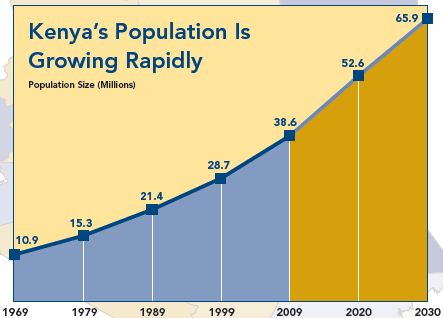
The Standard Newspaper on Thursday 31st October 2013 reported that the Government plans to vigorously promote a policy requiring women to have only two children. The move comes after the realization that the country can no longer sustain the population at the current birth rates of more than four children per woman. The Kenya Population Situation Analysis released on Wednesday this week by the Ministry of Devolution and Planning says the demand for children is still big in Kenya and must be managed downwards. “The demand for children is still high and is unlikely to change unless substantial changes in desired family size are achieved among the poor in general, notable in northern arid and semi-arid areas of the country” says the analysis, the first of its kind to be done in any African country.

أَهُمْ يَقْسِمُونَ رَحْمَتَ رَبِّكَ ۚ نَحْنُ قَسَمْنَا بَيْنَهُمْ مَعِيشَتَهُمْ فِي الْحَيَاةِ الدُّنْيَا ۚ وَرَفَعْنَا بَعْضَهُمْ فَوْقَ بَعْضٍ دَرَجَاتٍ لِيَتَّخِذَ بَعْضُهُمْ بَعْضًا سُخْرِيًّا ۗ وَرَحْمَتُ رَبِّكَ خَيْرٌ مِمَّا يَجْمَعُونَ
“Is it, then, they who allocate the mercy of your Lord?”
(Az-Zukhruf, 43:32)
News:
The Standard Newspaper on Thursday 31st October 2013 reported that the Government plans to vigorously promote a policy requiring women to have only two children. The move comes after the realization that the country can no longer sustain the population at the current birth rates of more than four children per woman. The Kenya Population Situation Analysis released on Wednesday this week by the Ministry of Devolution and Planning says the demand for children is still big in Kenya and must be managed downwards. “The demand for children is still high and is unlikely to change unless substantial changes in desired family size are achieved among the poor in general, notable in northern arid and semi-arid areas of the country” says the analysis, the first of its kind to be done in any African country.
Comment:
According to the UNFPA, the world population of 7.2 billion in mid-2013 is projected to increase by almost one billion people within the next twelve years. It is projected to reach 8.1 billion in 2025, and to further increase to 9.6 billion in 2050 and 10.9 billion by 2100. Much of the overall increase between 2013 and 2050 is projected to take place in high-fertility countries, mainly in Africa and Asia. In contrast, the population of the more developed regions is expected to change minimally, passing from 1.25 billion in 2013 to 1.28 billion in 2100. The net increase is due largely to migration from developing to developed countries.
A closer look at such statistics reveals they are intended to raise alarm on the perceived threat that current population growth rates pose to the world. The basis on which they are based is the Capitalist ideology which presumes that we leave in world with unlimited needs and scarce resources i.e. the economic problem facing the world is that of production. This means that any rapid growth in population leads to a strain on the scarce resources which is likely to result into conflict among nations. Such a view led to many so-called developed countries to encourage population controls through massive campaigns in family planning. Europeans have generally been having fewer children due to the decision of many parents to delay having a family. A total fertility rate of around 2.1 live births per woman is considered to be the replacement level while Europe currently has a level below 1.5. This has had a devastating effect as the labour force rapidly ages without any replacement from new births. Surprisingly, when migrants from mostly Muslim countries try to bridge the gap, complaints are raised about population explosion! The idea of population controls has also brought other undesirable effects like child trafficking and abortions. Children are trafficked for adoptions while abortions are common in many countries. It is of great concern that a country like Kenya claims that the population growth rate is very high yet we have vast swathes of uninhabited land that lies idle due to neglect. Curiously, the statistics stress on rapid population growth in arid and semi-arid areas which are mostly inhabited by Muslims. Could this be a sinister move to control the Muslim population? It is also a wonder that with its claim of most developed economy in the region, Kenya has failed to nurture and fully utilize the abundant human resource available as we see University graduates still doing menial jobs! The greed by the wealthy minority to consolidate more riches compels them to fear the poor majority that might one day rise up against them. That is why for over a century, we have been hearing of such alarmist statistics on population growth rates.
Islam as an ideology has a solution as it views the economic problem as being that of distribution of wealth and not production as viewed by Capitalism. Thus, the State provides an enabling environment in which all citizens have access to income generating activities and those that are unable get State help in terms of Zakah and Grants from the State Treasury (Bait ul-Mal). In fact, Islam encourages progressive birth rates as the youth form the backbone of any State that wishes to have advanced development. The world has got vast resources that are enough to satisfy all our needs and at no time can the human race fill the whole world as our Creator placed a natural way to balance the population through deaths.
Written for the Central Media Office of Hizb ut Tahrir by
Kassim Agessa
Member of Media Office of Hizb ut Tahrir in East Africa
